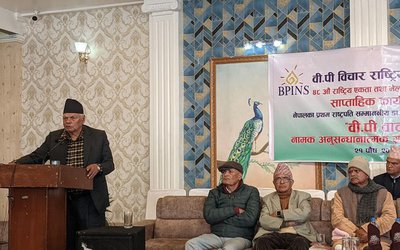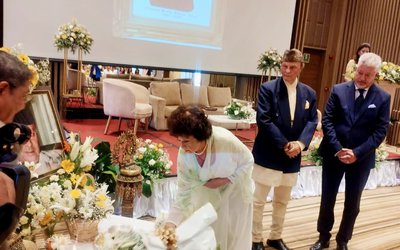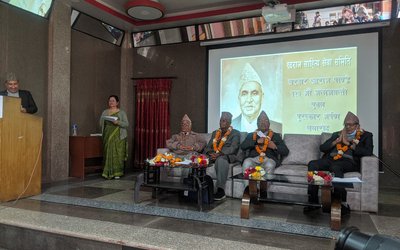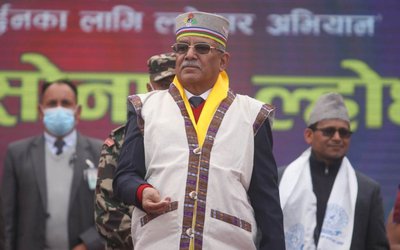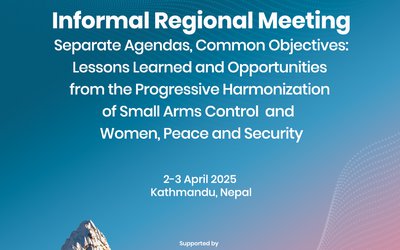
If we as adults are incapable of concentrating on one task for 12 hours, how can we expect 10th, 8th or 4th graders to do so? In Nepal, children are drilled even before they enter the first grade in the form of entrance exams to schools; something they have no clue about. As they enter school and begin to move to higher grades, the rote learning begins. They are made to mug up the multiplication tables and asked to memorize the first 40 elements of the periodic table. In the long run, this doesn’t help anyone except the teacher who gets the satisfaction of saying, “I did my job”. While ensuring a child has learnt his lesson, we forget that every child has a mind of his or her own. Children in 1st and 2nd grade should not be mugging up definitions of nouns and vowels, but should be exercising their creativity, exploring their minds and learning to make their own decisions, all of which can be achieved through art.
Art doesn’t necessarily confine one to painting or drawing. Some children might enjoy painting while others may enjoy singing, dancing, playing an instrument, acting, playing a sport, or creative writing. Being artistic results in a complete nourishment of creative desire and allows widespread development of the child’s mind. One development of utmost importance is the development of motor skills. Picking up a crayon or an instrument lets the child feel and experience his surrounding as he slowly begins developing the fundamental skills required in life. He begins to draw small things, which proceed to larger and more detailed designs, leading to him writing his own name without his hands shaking, for the first time.
Engaging in art not only helps build motor skills but also stimulates creativity. Many artists experience what they call a “creative block,” where they simply cannot generate an idea to work on. In Nepal, it seems to be the education system enforcing creative blocks on children by limiting their scope of studying to only text books and class lectures. Practicing thinking outside the box at a young age can make it easier to draft creative ideas in the future. Creativity is also what distinguishes one individual from the next; it gives one their identity. A child painting an imaginary animal will be so much different than one performing a ballet routine, yet both children have creative auras that allow them to formulate one idea after the next, making individual progress.
As every child has its own way of thinking and individuality, art is also a gateway to understand the mysteries of any one particular individual’s thoughts and how they learn best.The founder of kindergarten, Friedrich Froebel believed that art was one of the most important aspects of teaching children. It can help the teacher gain insight on the child and in some cases revealed what a child is good at, but it also ensures the complete development of a child’s mind. In his book Art and Creative Development for Young Children, published in 1998, Robert Schirrmacher states that engaging in artistic activity gives children the satisfaction of choosing their own material and picking their own subjects, ultimately making them independent thinkers. It allows them to make their own decisions, a habit they grow into as adults.
Perhaps the most important outcome of art is this decision making. As parents force their children to take up whichever career aspect they think will lead to a higher social status and a heavier pay check, they completely eliminate the idea that their children, too, have opinions and interests. Though this generation of parents in the capital does not seem to force these career expectations on their children and let them choose their own paths, many parents around the country still follow the social norm passed down. Maybe their child isn’t good at math and would much rather enjoy singing, or maybe he is hemophobic and doesn’t want to spend his life as a surgeon. By exploring his own surrounding, a child can choose what he wants to do and also choose what he wants to do in life.
It’s high time the Nepalese education system is modified to include the use of art in daily teaching by acknowledging the importance it holds in a child’s life. Art makes a child a free thinker, a decision maker and above all, a creative powerhouse.
- One Book to Rule Them All
- Aug 01, 2016
- Musical Medicine
- Jul 08, 2016
- Lights, No-Camera, Action!
- Jun 02, 2016
- Techno-Revolution: A Force To Embrace
- May 20, 2016
- The Nepalese ‘Broadway’ Movement
- Mar 30, 2016


